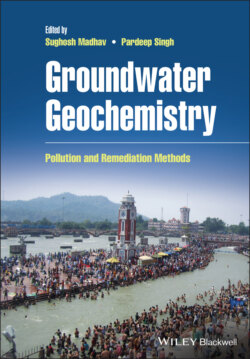Читать книгу Groundwater Geochemistry - Группа авторов - Страница 56
2.5.3.1 Adsorption
ОглавлениеAdsorption is one of the most feasible and cost‐effective methods for removal of fluoride (Figure 2.4). In this process, water is passed via a contact bed adsorbing fluoride on the matrix. The effective removal depends upon the concentration of fluoride, time of contact, pH, size, and type of adsorbent. After a period of time, the saturated column or bed should be refilled or regenerated. The first defluoridation was done around 1930 using activated alumina. It has a large surface area and porous aluminum oxide; the continuous aluminum lattice provides a localized positive charge area, creating a good adsorbent for many anionic adsorbates. Since it has a greater preference for fluoride ion in comparison to other ions, it is thus used widely in defluoridation (George et al. 2010). Activated charcoal, activated aluminum, fly ash, serpentine, brick, charfines, bone char, waste mud, red mud, kaolinite, rice husk, ceramic, bentonite, bioadsorbents, etc. are several capable adsorbents used for removal of fluoride‐contaminated water.
